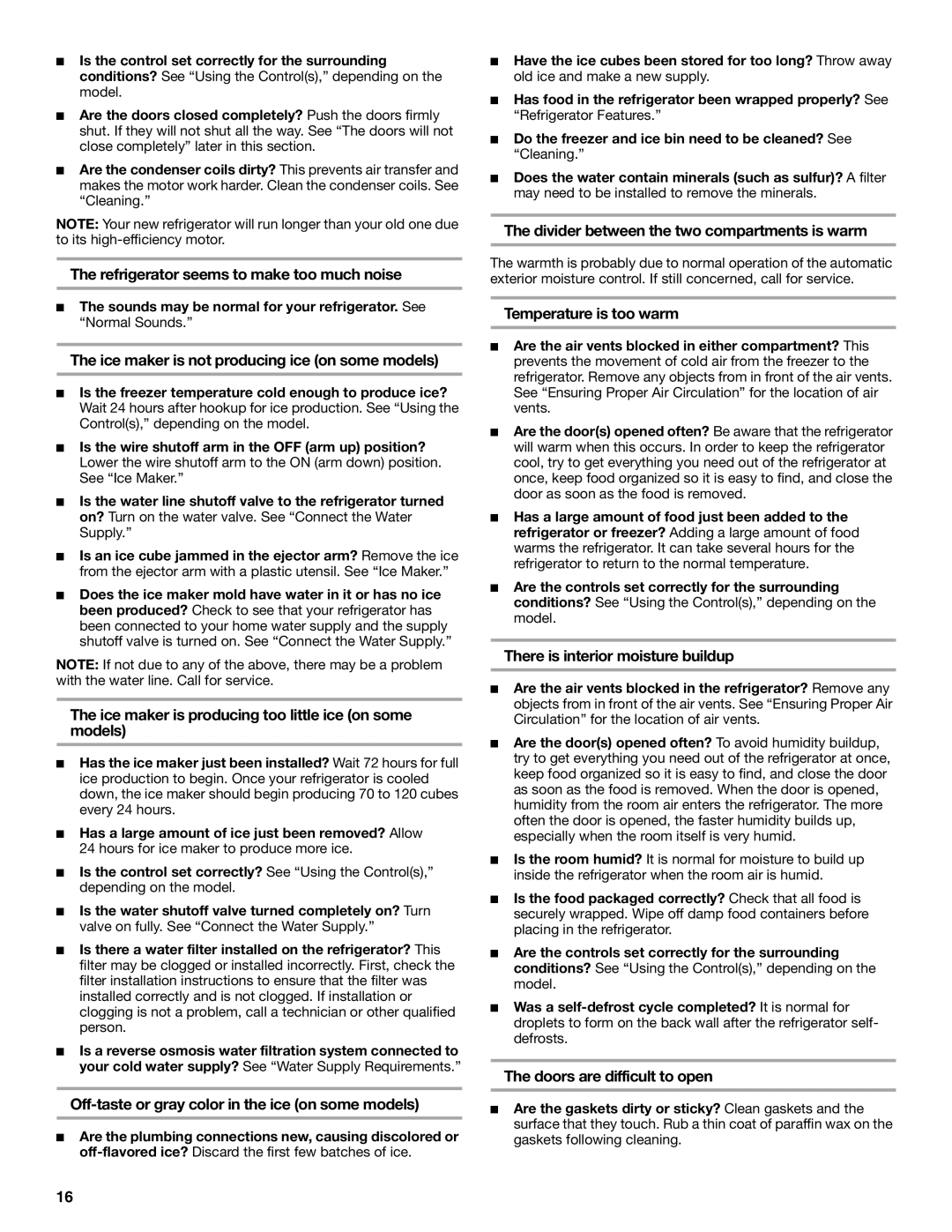GB2SHKXMQ00 specifications
The Whirlpool GB2SHKXMQ00 stands out as a modern refrigerator, engineered to meet the demands of contemporary households. With a combination of innovative features and advanced technologies, it offers a seamless user experience while ensuring food preservation and energy efficiency.One of the standout characteristics of the GB2SHKXMQ00 is its capacity. With ample storage space, it caters to families of different sizes, accommodating everything from large pizza boxes to tall bottles. The well-designed interior optimizes space, featuring adjustable shelves that allow users to customize the layout according to their needs. The exterior boasts a sleek stainless steel finish, giving it a stylish look that can complement any kitchen decor.
The refrigerator employs Whirlpool's precise temperature management technology, which utilizes an adaptive cooling system to maintain consistent temperatures across all compartments. This ensures that food items are kept fresh while extending their shelf life. The advanced cooling system also minimizes temperature fluctuations, which can be detrimental to perishable items.
In terms of organization, the GB2SHKXMQ00 is equipped with innovative storage solutions. It features humidity-controlled crispers designed to keep fruits and vegetables fresher for longer. Additionally, the door bins are specifically designed for easy access to frequently used items such as condiments and beverages, enhancing convenience for the user.
Energy efficiency is a crucial aspect of the Whirlpool GB2SHKXMQ00. The appliance is ENERGY STAR certified, meaning it consumes less power than standard models while providing optimal performance. The energy-saving features not only reduce electricity bills but also minimize environmental impact, making it a responsible choice for eco-conscious consumers.
Whirlpool's unique FreshFlow technology plays a significant role in preserving the quality of food. This system includes an air filter and an ethylene gas filter that work together to keep the refrigerator's atmosphere fresh and free from unpleasant odors. This ensures that food retains its original flavor and freshness for an extended period.
For added convenience, the GB2SHKXMQ00 incorporates easy-to-use controls, allowing users to adjust settings with minimal effort. Its integrated ice maker ensures that there’s always ice on hand, perfect for entertaining guests or enjoying a refreshing drink.
In summary, the Whirlpool GB2SHKXMQ00 is a feature-rich refrigerator designed for modern living. Its focus on space optimization, advanced cooling technologies, and energy-efficient operation make it a valuable addition to any kitchen. With its combination of functionality and style, it is the perfect choice for those seeking reliability and performance in their kitchen appliances.

